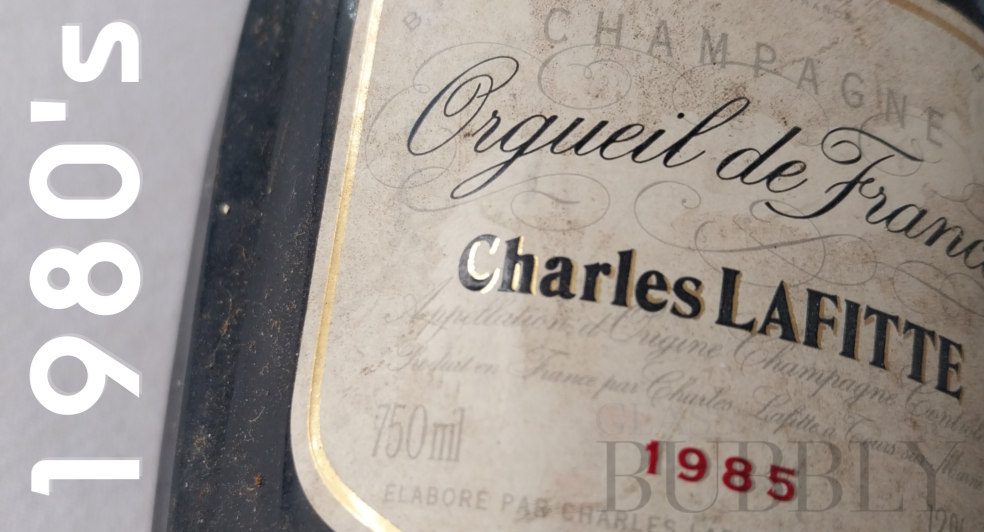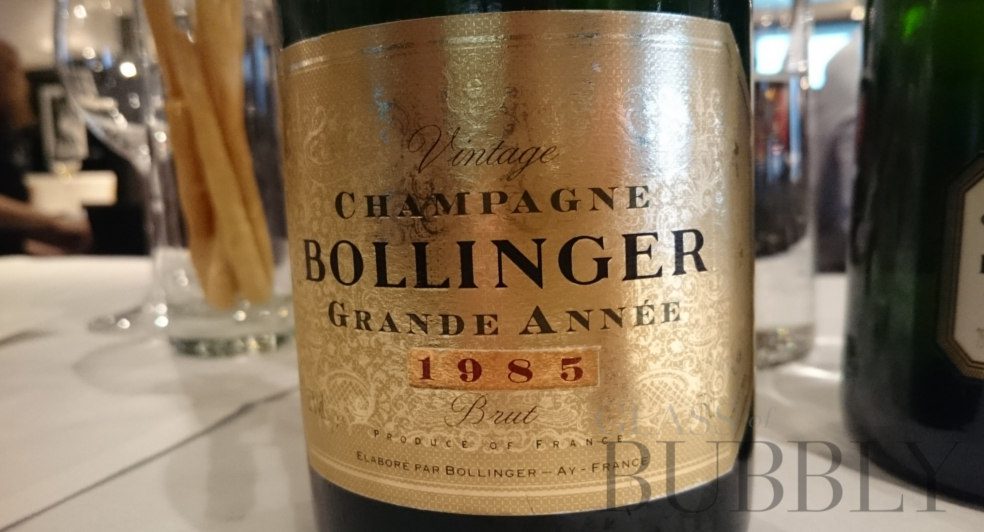Champagne Vintage Years: 1980’s
30th March 2023

Some would say that the 1980’s was a glorious decade for Champagne and contained some of the best vintage examples with people still enjoying them today. With thousands of producers and countless famous labels, even when the weather was not the greatest there will still be some vintage labels released though the year might not be commonly known as an (un)official ‘vintage year’.
Looking at what the experts say online and in varied Champagne themed publications, the 1980’s delivered a few exceptional harvests, notably 1982, 1983, 1985, 1986, 1988 and 1989.
What exactly makes for a vintage Champagne? Though there is no overall official consensus as to what year will take on a title of vintage, neither are there standards set which have to be achieved, the decision is instead independently taken by each wine maker / cellar master of the Champagne houses themselves.
What exactly is a vintage Champagne? For those wondering what a vintage means, the explanation is quite simple – All the grapes used to make the Champagne were from the same year and to signify this a year will be stated on the bottle. Important to remember that though many vintages are old, the term ‘vintage’ in the world of wine does not mean ‘old’!
“The Champagne region is quite a sizable one so even though weather on the whole can be good or bad, this can vary from region to region so a vintage might not be declared by most wineries, but a few can buck the trend via pockets of finer weather and superior harvests.”
What makes a vintage unique will most certainly be down to one factor and that is the weather. Nothing else is likely to be changing from the terroir so the grapes harvested and the quality defined is thanks to the weather patterns on show during the year all the way up to the final harvest of the fruit from the vines.
“I have enjoyed a few vertical tastings with Champagne houses that included a host of vintages from the 1980’s where I have sat alongside industry greats such as Jancis Robinson and Michael Edwards discussing our notes. Not only were these memorable occasions that I am very grateful I was invited to partake in, the tasting experience was also phenomenal. At these ages the wines were up to 4o years of age so the style of Champagne we are enjoying is totally different to what we can expect from younger Champagne, gone is the lively bubbles and fresh floral / fruits and over to a flatter style with deep intense colours, aromas and flavours.“ Christopher Walkey
Champagne Vintages 1980 – 1989:
1980: The decade kicks off with a poor vintage year and a summer attacked by cold and wet conditions. A smaller harvest than usual was salvaged thanks to a heat wave during the month of September. Not regarded as a vintage year in any capacity, yet Champagne houses did release some to include Dom Pérignon rosé, Krug (Clos du Mesnil), Pommery (Cuvee Louise) and Veuve Clicquot.
1981: Slightly lower yields thanks to frost in April, though a slight recovery to give 1981 an average rating for the vintage quality. Much of the advice online says that this vintage is now passed its prime so it is not surprising that the decision back then from the majority of Champagne houses was to focus on their blends over releasing vintages! Despite a somewhat poor reputation as a vintage year, Champagne houses who released labels include Louis Roederer (Cristal), Krug (Clos du Mesnil), Taittinger (Comtes) and Charles Heidsieck.
1982: The first of the vintage quality harvests in the 1980s goes to that of 82 which many would say was the best of the decade. Both fine weather throughout the growing season and a bumper harvest without loss of quality saw Champagne houses producing their vintage labels with many still being fine to drink today some 4o years later. Salon (Cuvée S), Taittinger (Comtes), Louis Roederer (Cristal), Perrier-Jouët (Belle Epoque), Dom Pérignon, Billecart-Salmon (Cuvee Nicolas-Francois Billecart) and so many more to include fine rosé were released.
1983: Though a cold and rain packed start to the year slowed the commencement of flowering, recovery was swift with a decent summer and as and when required there was rainfall. Though 1982 really took the spotlight and many wine makers were still buzzing with excitement for what it was to become, 1983 still gets a vintage status. Many report the harvest as good to excellent – “The 1983 Champagne vintage was remarkably good” as quoted on wine-searcher. Vintages to look out for include Taittinger (Comtes), Perrier-Jouët (Belle Epoque), Krug (Clos du Mesnil) and Dom Pérignon (P3 Plenitude).
1984: Not down as a good year for Champagne production and known as the wet year. Very minimal amounts of grapes went in to making vintages with only the Le Mesnil (Vinotheque) of note released.

1985 Vintage – Bollinger Grand Année
1985: Despite record low temperatures during winter of -20c and lower and much of the harvest being lost to frost, the summer months rewarded the bold grapes with the best of weather conditions. Lots of opinions state the 1985 vintage as ‘exceptional’ and rivalling that of 1982. A wide selection of fine vintages from many of the greatest producers were made including that of Bollinger (La Grande Année), Louis Roederer (Cristal), Dom Pérignon rosé, Pol Roger (Cuvee Sir Winston Churchill), Moët & Chandon and Dom Ruinart.
1986: A relatively inconsistent weather pattern saw the 1986 harvest being reported as, at best, average quality. Even with a pretty much downplayed vintage we still saw many Champagne houses releasing labels which include Philipponnat (Clos des Goisses), Louis Roederer (Cristal), Pol Roger (Cuvee Sir Winston Churchill), Dom Ruinart and Moët & Chandon.
1987: Once again a less than perfect harvest and the general impression was poor in relation to vintage potential thanks to a cooler and damp summer. The advice is that the vintage is now past its best, though if you wish to explore 1987 you can find releases from Pommery (Cuvée Louise), Charles Heidsieck (La Collection Crayeres), Palmer & Co and Alexandra Bonnet (La Foret).

1988 Vintage – Dom Ruinart
1988: The yoyo decade continues as we go from poor in 1987 to excellent in 1988 and described by Michael Edwards as “one of the best all-time greats of the post -1945 era“. A warm spring and an even warmer summer in general allowed for most Champagne houses to produce a vintage. Look out for Louis Roederer rosé (Cristal), Salon (Cuvée ‘S’ Le Mesnil), Dom Ruinart, Bollinger (La Grande Année), Jacques Selosse and the Dom Pérignon (P3 Plenitude).
1989: As the 1980’s come to a close we are blessed by another relatively decent vintage. Though late frost in April saw nearly a quarter of the harvest lost, the summer period gave some pay back to recover from. Plenty of Champagne houses released vintages and you can pick from the likes of Krug (Clos du Mesnil), Louis Roederer (Cristal), Perrier-Jouët (Belle Epoque), Billecart-Salmon (Cuvee Nicolas-Francois Billecart) and Henriot.
![]()
Christopher Walkey
Co-founder of Glass of Bubbly. Journalist and author focused on Champagne & Sparkling Wines and pairing them with foods.
